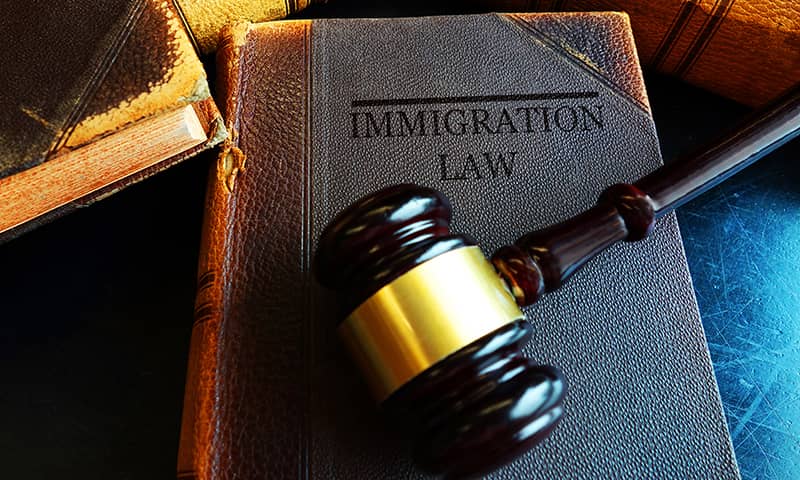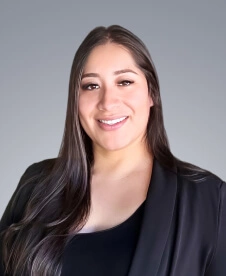If you received a 2-year conditional green card through marriage, you may be wondering what you need to do to remove those conditions and become a permanent resident. Don’t worry – you’re not alone. Every year, thousands of conditional residents file Form I-751 to convert their status to permanent.
In this comprehensive guide, our family immigration lawyers will walk you through everything you need to know about the I-751 process, from who must file to how to file to what happens after filing. We’ll also give tips for avoiding common mistakes so you can successfully navigate this important step on your immigration journey.
Who Needs to File Form I-751?
Let’s start by clarifying who exactly needs to file the I751 petitions.
If you meet the following criteria, you should plan to submit Form I-751 within the 90-day window before your two-year green card expires:
- You received your green card through marriage to a U.S. citizen or lawful permanent resident. Family-based immigrants almost always get conditional status first.
- Your status code on your green card says CR1, CR2, CF1, C21, or CX1. These are the most common codes for spouses of citizens and permanent residents with conditional green cards.
- Your green card has an expiration date of two years from when it was first issued. All conditional cards expire after the two-year mark.
- You want to remain a lawful permanent resident. Submitting the I-751 is the only way to convert your conditional status to permanent status.
It’s essential that you file within the 90-day window before expiration of your 2-year green card. For example, if your conditional green card expires on June 1, 2024, you must submit your I-751 between March 3, 2024 and May 31, 2024.
Missing this deadline could jeopardize your immigration status, so be sure to calendar your filing window as soon as you get your conditional card.
Required Supporting Documents for Form I-751
The permanent resident petition itself is relatively straightforward. Supporting document requirements are much more complex, especially since some of these rules are informal.
These requirements include:
- Complete copies (front and back) of green cards for everyone in the family, including children.
- Proof of a marriage in good faith.
- Comprehensive details of any criminal charges since the green card date. A letter of explanation, which a San José immigration lawyer could draft, often makes a big difference.
Also, include a letter of explanation if filing late. Under current immigration law, USCIS must consider such actions if it was reasonable due to extraordinary circumstances.
How to File Form I-751
When it comes time to file, you have two options – submitting jointly with your spouse or requesting a waiver of the joint filing requirement.
Filing Jointly
For those who are still married and have a bona fide relationship, filing jointly with your spouse is the simplest approach. You and your spouse will both sign Form I-751 and include evidence that you married to establish a life together.
Documents like joint bank statements, insurance policies, birth certificates of children born during your marriage, wedding photos, and cards or letters can help prove you share assets and a home life.
You’ll also need a copy of your spouse’s proof of citizenship or permanent resident card to verify their status. Compile all required documents, sign the forms, including your green card and filing fee, and mail off the petition.
Filing Independently — Seeking a Waiver
In some cases, joint filing may not be possible or advisable. Spouses who divorced or endured the death of a spouse before the two-year mark can request a waiver of the joint filing requirement. You’ll still submit Form I-751, but it will also include documentation of your extenuating circumstances. For example, include the divorce decree or death certificate.
Those escaping domestic violence or extreme cruelty can also file for a waiver. Police reports, medical records, court documents, or other evidence are needed to back up your claims.
Finally, it’s possible to file for an extreme hardship waiver, in which you prove that a hardship arose after obtaining your conditional green card, which makes it difficult to return to your home country.
While waivers allow you to file individually, they do take more time and evidence to be approved and are difficult to win. It’s best to consult an experienced immigration attorney if you’re seeking a waiver.
How Long Does I-751 Processing Take?
We always get asked – how long does this all take? On average, processing times range from about six months on the low end to 12 months or even more on the high end. However, each case is different.
Factors like your service center location, if an interview is required, or requests for extra evidence can impact how quickly your petition is adjudicated.
If you don’t receive a decision within 15 months of filing, we’d recommend contacting USCIS to inquire. They can confirm if your case is still progressing normally or intervene if needed.
What Happens After Filing?
Once you’ve filed your I-751 over the coming months, you’ll receive an official receipt in the mail confirming that USCIS accepted your petition. This receipt extends your conditional resident status while you wait for a decision.
You’ll also be called in for a biometrics appointment where your fingerprints and photos will be taken. This generally happens within a month or so of filing. Some applicants then receive an interview notice to discuss their petition in person with a USCIS officer. It’s not guaranteed, but can provide a chance to supply additional details.
Finally, you’ll wait for a decision. Checking your case status online with the receipt number is the best way to follow along.
If Approved…
Once approved, you’ll finally receive your new permanent resident card in the mail. This card will now be valid for ten years rather than two.
As a lawful permanent resident, you can relax knowing you have full rights and privileges. This includes being able to live and work in the U.S., travel freely, petition for certain family members to join you, and eventually apply for U.S. citizenship.
If Denied…
If USCIS finds you didn’t provide adequate evidence or misrepresented your marriage, the case will be referred to an immigration judge for removal proceedings and review of the I-751.
This makes it critical to take legal action as soon as possible. Consulting an immigration attorney is wise to understand all your options.
Connect With an Experienced Family Immigration Lawyer
By checking the right boxes, conditional green card holders can become permanent green card holders. For a confidential consultation with an experienced family immigration lawyer, reach out to the Law Office of Lina Baroudi in San Jose. We routinely handle matters throughout the Bay Area. Don’t hesitate to contact us today!





















